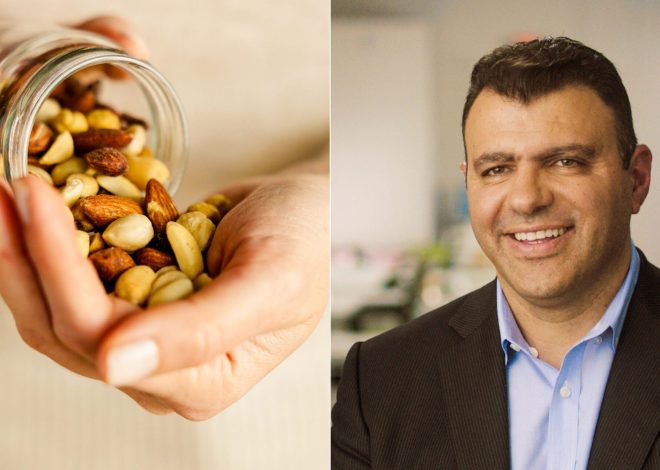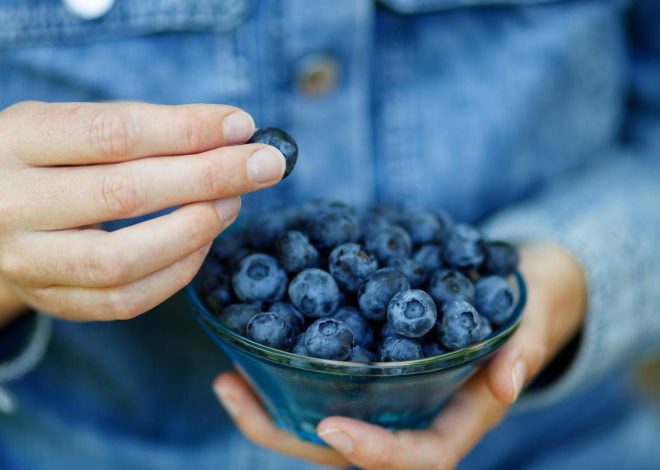
Oat milk: Does it raise blood sugar levels?
Oat drinks are popular as an environmentally and animal-friendly alternative to milk. But uncertainty and criticism are spreading on social media: they are said to cause unhealthy blood sugar spikes. Is that true? Two experts classify
Whether in coffee or muesli, for cooking or baking: oat drinks can be found in many refrigerators. They are considered a healthy plant-based alternative to cow’s milk and are therefore also suitable for vegans and people with lactose intolerance.
But oat drinks are sometimes criticized on social media. The drinks are said to cause unhealthy spikes in blood sugar due to their high sugar content. And as a result, they are said to promote tiredness, cravings or skin problems.
What’s the truth behind it? Two experts explain how much sugar is contained in oat drinks, what it does to blood sugar levels – and who should actually replace them with another plant-based drink.
Oat drinks naturally contain sugar
Generally speaking, oat drinks contain sugar – even if they are unsweetened. Like all grains, oats are made of starch. Even if it doesn’t taste sweet at first, it contains many sugar molecules linked together.
In order to make a tasty drink from the grain, the oats are processed. “Enzymes are added that break down the starch. This splits off sugar residues and creates malt sugar. Oat drinks therefore have a natural sugar content,” explains nutritionist Prof. Nicolai Worm.
The amount varies greatly and also depends on the manufacturing process. On average, however, it is four grams per 100 grams of drink, according to Karlis Briviba, who is the acting director of the Institute for Physiology and Biochemistry of Nutrition at the Max Rubner Institute.
However, this value alone does not say much about how exactly the oat drink affects blood sugar levels. For this, we need to look at two other measurements: the glycemic index and the glycemic load.
Glycemic index and glycemic load – what is that?
The glycemic index indicates how much the carbohydrates in a food increase the blood sugar level. Long-chain carbohydrates, such as those found in whole grain products, increase the blood sugar level more slowly. Carbohydrates – i.e. sugar – in soft drinks or sweets, for example, increase the blood sugar level much more quickly.
The scale ranges from 0 to 100. The higher the value, the faster the carbohydrates are digested and enter the blood. “Oat drinks have a relatively high value,” says Karlis Briviba. It is just over 60 and is therefore comparable to conventional household sugar.
But it also depends on how many carbohydrates a food actually contains. This is the glycemic load. Two foods can have the same glycemic index but have a very different effect on blood sugar levels. Simply because one food has significantly more carbohydrates than the other.
“The glycemic index of oat drinks is relatively high, but the glycemic load is low,” says Briviba. “If we want to make a comparison, a glass of oat milk would have comparable values to a small slice of wholemeal bread or half a slice of wheat bread.” The expert’s assessment: “That is very low and is not particularly significant for healthy people.”
These are the effects on the body
In short: there is no reason to demonize oat milk per se. When it comes to a healthy and balanced lifestyle, it is not a question of a single food, but of the diet as a whole.
Nicolai Worm also thinks that a health discussion based on the sugar content of oat drinks is “complete nonsense”. How healthy a food is cannot be determined by a slightly rising blood sugar level, he says.
Especially since a healthy body can handle such a rise in blood sugar well. In healthy people, the blood sugar level after eating does not rise above about 140 mg/dl. “It doesn’t matter whether you eat more or less sugar, the body counteracts this by releasing more insulin,” says Worm.
Diabetics need to keep an eye on their blood sugar levels
A problem only arises when the body can no longer produce enough insulin, i.e. when diabetes occurs, or when insulin resistance occurs. The body then has to release a multiple – and therefore unhealthy – amount of insulin to get the sugar out of the blood, says Nicolai Worm.
Insulin resistance is caused by a lifestyle that includes a lack of exercise, obesity, lack of sleep and other factors. It often goes undetected for a long time because it does not cause any symptoms.
However, people with diabetes should exercise a certain degree of caution when it comes to oat drinks: “You should always pay close attention to how many carbohydrates you consume,” says Briviba. And for the sake of your blood sugar level, it’s better to replace the oat drink with the unsweetened almond or soy version.
Which nutrients are (not) found in oat milk
However, Nicolai Worm has another criticism of oat drinks: “Compared to cow’s milk, oat drinks contain very few essential nutrients such as calcium or iodine.” That is why the industry enriches the products with minerals and trace elements.
But plants – including oats – always contain so-called inhibitors, as Worm explains. These make it difficult for the body to absorb nutrients, so that even the added calcium can hardly be used. “According to studies, the calcium availability in oat drinks is three percent. In cow’s milk it is given as 30 percent.” In terms of protein content, oat drinks are also significantly lower than cow’s milk. “That means the value, the pure nutritional value, is lower compared to milk.”

Ethel Purdy – Medical Blogger & Pharmacist
Bridging the world of wellness and science, Ethel Purdy is a professional voice in healthcare with a passion for sharing knowledge. At 36, she stands at the confluence of medical expertise and the written word, holding a pharmacy degree acquired under the rigorous education systems of Germany and Estonia.
Her pursuit of medicine was fueled by a desire to understand the intricacies of human health and to contribute to the community’s understanding of it. Transitioning seamlessly into the realm of blogging, Ethel has found a platform to demystify complex medical concepts for the everyday reader.
Ethel’s commitment to the world of medicine extends beyond her professional life into a personal commitment to health and wellness. Her hobbies reflect this dedication, often involving research on the latest medical advances, participating in wellness communities, and exploring the vast and varied dimensions of health.
Join Ethel as she distills her pharmaceutical knowledge into accessible wisdom, fostering an environment where science meets lifestyle and everyone is invited to learn. Whether you’re looking for insights into the latest health trends or trustworthy medical advice, Ethel’s blog is your gateway to the nexus of healthcare and daily living.



